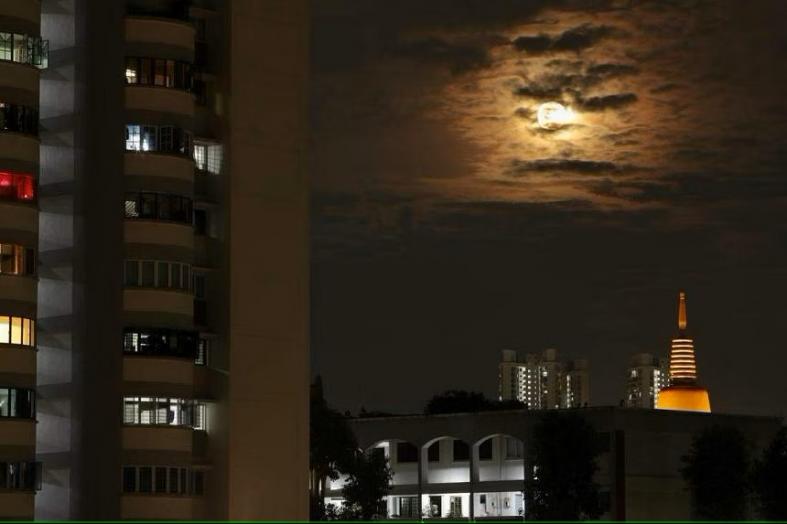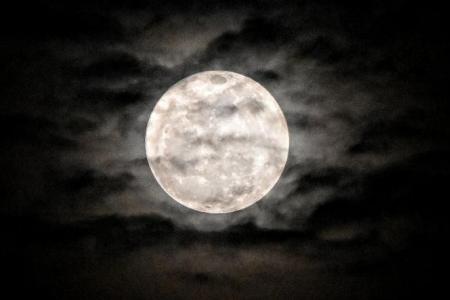Two supermoons to light up Singapore’s skies in August
Singapore’s stargazers will be rewarded with not one, but two sightings of the supermoon next month.
A supermoon is a full moon that orbits closest to Earth, making it appear larger and brighter than usual.
The supermoons in August - the sturgeon moon and the blue moon - will be visible in Singapore on Aug 1 and Aug 31 respectively, said Science Centre Observatory on Tuesday.
The sturgeon moon is the second of four supermoons to appear this year, after the buck moon graced the night sky on July 3.
It will be 357,581km from Earth at its nearest point, making it the second closest supermoon to our planet this year.
The blue moon is expected to be the brightest and closest supermoon to the Earth this year. It will be 357,182km from Earth at its nearest point.
Here are some interesting facts about the two supermoons.
Q: How did the sturgeon moon and blue moon get their names?
First coined by Native Americans, the sturgeon moon was named after the large sturgeon fish. During the period when the sturgeon moon is out, it is believed that this fish is more commonly found in the Great Lakes and other major bodies of water in North America.
The blue moon refers to the second full moon in a month with two full moons, which differs from the seasonal definition of a blue moon, which is the third full moon in an astronomical season with four full moons.
Having two full moons in a single month happens every two to three years. The most recent blue moon was seen on Oct 31, 2020.

The sturgeon moon is forecast to start rising in Singapore at 7pm on Aug 1 in the south-east direction.
From 9pm onwards, it will reach its optimal height in the sky for viewing, and will continue rising till it reaches the Meridian, the highest point it will reach in the sky, at 1am on Aug 2, before its begins to set in the south-west direction.
The blue moon is predicted to start ascending in Singapore at 7.34pm on Aug 31, approximately in the east direction.
It will reach its optimal height for viewing from 9pm onwards, and will continue rising until it reaches the Meridian at 12.51am on Sept 1, before it begins to set in the south-west direction.
The blue moon is not actually blue, but there have been instances when it has appeared to be so due to water droplets in the air, certain types of clouds, or particles lifted into the atmosphere by natural catastrophes such as smoke or volcanic ash.
During the volcanic eruption of Indonesia’s Krakatoa in 1883, the moon appeared blue as ash particles scattered red light and acted as a blue filter.
Q: Where are the best places to view the August supermoons?
The supermoons can be seen from anywhere in Singapore as long as the skies are clear and offer an unobstructed view, said the Science Centre Observatory.
Open public areas such as Marina Barrage, East Coast Park, and the Southern Ridges could offer a better and potentially elevated view of the supermoons, it added.
Q: Can the supermoons be viewed with a naked eye?
Yes - according to the Science Centre Observatory, these bright supermoons will be hard to miss, unless the skies are particularly cloudy.
“However, it’s worth noting that the moon’s appearance can vary depending on atmospheric condition and your specific location,” said the observatory.
Q: When is the next supermoon?
The last Supermoon of the year - the harvest moon - is forecast to be out on Sept 29.
Get The New Paper on your phone with the free TNP app. Download from the Apple App Store or Google Play Store now


